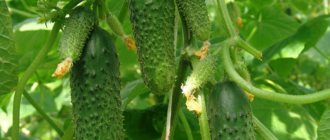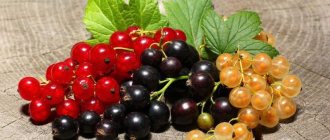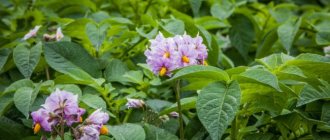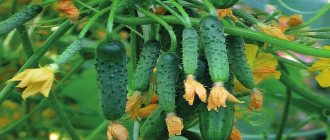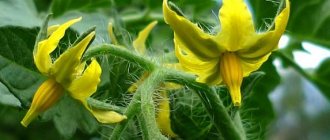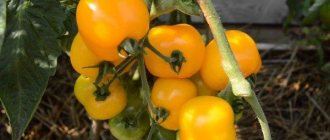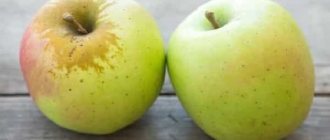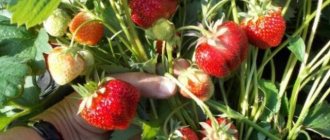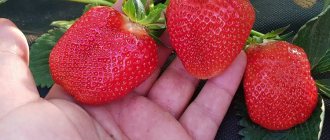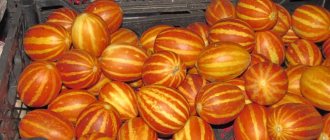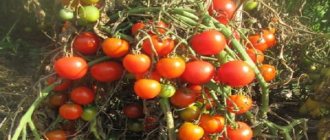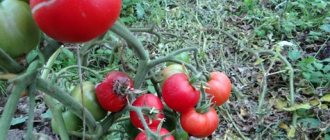Italian breeders have pleased us with another wonderful variety of strawberries, which is suitable for growing in continental European climates. In Russia, the variety is cultivated both in open ground and in greenhouses, greenhouses, and booths. Suitable for low volume and hydroponics.
Aprica strawberries are the result of the activities of an Italian consortium of nurseries (C.IV). Officially sold through Salvi vivai (Italy) and Mazzoni (Italy)
Berries
The fruits are conical in shape, mostly one-dimensional. Occasionally there are “double” ones, simply huge, to the delight of children, to the chagrin of industrialists. The color is bright red, the skin is glossy. The average weight of the fruit is 30 g. When it rains, the berries do not get wet. Above average size remains throughout the harvest.
The pulp is dense, tasty, sweet, with a subtle strawberry aroma. Transportability is good. The taste of the berries does not deteriorate even with a lack of sunlight and excessive humidity.
Thanks to their dense structure and balanced taste, Aprica strawberries can be consumed fresh or canned with equal success.
Productivity
The variety is self-pollinating. The first wave of ripe berries appears in the second half of May. The yield is 1.2 kg. on the bush. The variety begins to reveal its potential from the second year after planting. It is characterized by stable productivity, which is practically independent of weather conditions.
Advantages and disadvantages of the variety
The strawberry variety Primi has a lot of advantages, thanks to which it deserves its place in the garden:
- early period of fruiting;
- high yield, each plant can produce 1 kg of berries;
- preservation of taste and presentation during transportation over long distances due to the dense structure of the pulp;
- ability to be stored for up to 5 days, subject to optimal conditions;
- versatility in use, the fruits are good not only fresh, but are suitable for preparing for the winter, including freezing;
- resistance to root diseases and various molds;
- ease of care, as the crop tolerates winter and short-term drought well.
There are a number of disadvantages of Primi strawberries:
- plant seedlings form a small harvest in the first year, abundant fruiting is observed 2 years after planting;
- the need for frequent replacement of plantings, approximately every 4 years.
There are many more pros than cons. Therefore, with the help of proper care, you can get not only a lot of pleasure from tasty and healthy berries, but also additional income.
a brief description of
Italian breeders were able to please gardeners in many respects. Aprika strawberries have a long list of benefits.
Advantages of the variety
- large fruit;
- one-dimensional berry shape with a low rejection rate;
- the taste is harmonious, sweet;
- high transportability;
- does not get wet from prolonged rainfall;
- mid-early harvest;
- good productivity, which depends little on the weather;
- self-pollinating, does not depend on neighboring pollinators;
- drought resistance;
- berries are not baked in the sun;
- high resistance to diseases, including powdery mildew;
- return frosts in the spring are not scary;
- unpretentiousness to soil composition;
- possibility of growing in greenhouses, hydroponics;
- produces a moderate number of tendrils, sufficient for propagation, but not leading to the “spreading” of the variety.
The variety is still being tested, and no particularly significant shortcomings have been found so far.
If you really find fault, the disadvantages include:
- poor harvest in the first year of planting;
- high cost of planting material.
Aprica strawberries claim to be among the best representatives of mid-early varieties.
Landing
It is recommended to plant aprica in spring or summer. By autumn the bushes will get stronger, develop and produce a good harvest next year. In the southern regions, Aprica will have time to take root when planted in August and even in September.
Aprica prefers sunny areas with good drainage. There are no special requirements for the composition of the soil. The best results will be shown on soil that is neutral in acidity (pH: 5.2 - 5.5), rich in humus (for each m2 of berry garden it is recommended to add at least a bucket of rotted manure and 200-250 g of wood ash). The occurrence of groundwater should be no closer than 1.0 m to the surface of the earth.
When placed in a bush manner, 4 plants are planted on one square meter, with a distance of 25-30 cm. If you grow Aprica with ribbons, it will be more convenient to monitor the release of tendrils, comfortably harvest and weed the plantation from weeds. A distance of 30 cm is left between plants, and 50 cm between ribbons. For uniform lighting, the ribbons are placed from north to south.
When planting, make sure that the root collar is not sunk into the ground. For the first two weeks, young seedlings need increased daily watering.
Care Tips
Carrying out all the agricultural techniques for caring for Primi strawberries will allow the crop to begin bearing fruit in the shortest possible time and for a long time to form harvests of tasty, high-quality fruits.
Feeding
The strawberry variety Primi will thank you for fertilizing with an abundant harvest of sweet and large berries. It is recommended to carry out 4 feedings per season:
- After the snow melts, using a complex mineral composition containing nitrogen, the dose of which should be less than usual. This operation can stimulate the growth of green mass and the formation of flower ovaries.
- Before blooming flower stalks, use nitrophoska in the amount of 20 g per bucket of water with the addition of 2 g of potassium sulfate.
- At the time of flowering, fertilize with organic matter by diluting manure in water in a ratio of 1:8.
- After harvesting, no later than mid-August, water the plants with an ash solution containing 200 g of wood ash and 10 liters of water. Each bush should receive 1 liter of the composition.
When applying fertilizers, you must follow the dosage.
Watering
Strawberries of the Primi variety need regular watering. A sprinkler or drip irrigation system can handle this. It is important to water the crop moderately, avoiding excessive soil moisture.
Mulching the beds
One of the measures for caring for Primi strawberries is mulching, which will stop the growth of weeds and ensure free access of water and fertilizers to the roots of garden strawberries. Use sawdust, peat, and small straw as mulch.
Cleaning bushes and beds
Strawberry beds must be kept clean at all times. To do this, you need to remove the cover in early spring, remove dry leaves and last year's mulch layer. If this is not done in time, the roots will warm up worse, and the plant will later wake up and start growing poorly.
Using pruning shears, you should trim off old, damaged foliage, remaining tendrils and last year's flower stalks. Also remove root leaves lying on the ground.
Carefully loosen the berry plantings, being careful not to harm the root system. This technique will improve soil aeration and help retain moisture in the soil. Also, if the roots are exposed, you need to sprinkle them with fertile soil.
Preparing for winter
Protecting a strawberry bed in winter is considered an important agrotechnical procedure when growing crops. Therefore, you need to prune the plants, removing old dried leaves and excess shoots. You also need to loosen the soil well so that the root system receives oxygen.
At the next stage, mulch the strawberry bed using pine needles, straw, and hay. With the onset of spring, remove the shelter to avoid overheating of the plantings.
Growing and care
The variety has shown itself to be unpretentious to care. Does not require special knowledge and growing skills from the gardener. Agricultural technology includes a standard list of activities, when performed, you can count on good results.
Watering
Beginner gardeners make the mistake of stopping watering their strawberries after harvest. The plant needs water from the beginning of the growing season until it is covered for the winter. The amount of watering depends on weather conditions. In hot weather, irrigation is carried out every 3-4 days. A drip irrigation system is preferred.
You should not test the plant’s “patience” and make it suffer during drought. Aprica will survive, but productivity and immunity will decrease
Loosening, weed control
Strawberry beds must be kept clean. Weeds take away the light that is needed for the berries to ripen, interfere with ventilation and remove nutrients from the soil. The first loosening is carried out in the spring, as soon as the soil becomes soft. In the future, crust formation is not allowed until the end of September. Loosening can be replaced by mulching with straw or agrofibre.
Removing a mustache
The whiskers are regularly removed, otherwise they will take away part of the energy that should go to the formation of the ovaries. The variety produces a small amount of mustache, so monitoring this process is not difficult.
Top dressing
Timely fertilizing improves plant productivity. Aprika is fed 3-4 times per season:
- In early spring, the plant needs nitrogen fertilizers. The best option is a one-time feeding with diluted cow manure. 2 kg of manure is stirred into 10 liters. water. Each plant requires 1 liter of fertilizer. When replacing fertilizer with chicken manure, the concentration is reduced by 5 times.
- During the period of fruit set, the nutritional supplement recipe consists of 1 tbsp. spoons of potassium salt, 2 tbsp. spoons of nitrophoska per 10 liters of water. Dissolve and add 0.5 l. on the bush.
- During the fruiting period, you can help the bush produce tasty large berries by watering it with a solution of wood ash: 1 cup of ash is diluted in 10 liters of water. 1 liter of solution is enough per plant.
If the soil is rich in humus, you don’t need to add anything in the fall, otherwise you can provoke the growth of bushes before winter. You can scatter wood ash over the garden bed, which will strengthen the plant and at the same time repel many pests of berry crops.
Pest and disease control
The variety has shown high resistance to diseases of the root system and aerial parts. If strawberries are given sunny places in the garden and the bed is kept clean, then Aprika is not afraid of rot, spotting and powdery mildew. This quality is valued by gardeners and farmers who strive to grow environmentally friendly crops.
To prevent a protective barrier against infections and pests, you can plant marigolds, garlic, fennel, and lemon balm around the strawberry beds.
Preparing for winter
The variety showed good winter hardiness with a minimum of shelter in the Moscow region, the Urals, the Volga region, and the northern regions of Belarus. A 5 cm layer of mulching material is enough. This could be straw, sawdust, or leaves. When growing the variety in the Krasnodar and Stavropol territories, in the republics of the Northern Caucasus, the Aprika variety does not need shelter.
Words about Aprica: value assessment, characteristics
According to representatives of Vivai Mazzoni, this is one of the successful new products in the early segment of the product range, suitable for commercial production of various scales.
Suitable for growing in the continental climate of the European part of Russia, for the milder climate of Ukraine, grown in Belarus. The minimum number of cold temperatures is 700 hours.
Comparative characteristics with predecessors in the same niche: the curve seems to hint at high productivity. As they say, we'll see)
Due to the lack of data as such on cultivation in Russia and Ukraine - at least from absolutely reliable verified sources on productivity, profitability of use in industrial areas, we have to rely on the experience of foreign colleagues. Alas, in Eastern Europe, which has similar soil and climatic conditions, the new product is also just beginning to spread - but the results of 2-3 years of experience are already there.
Suitable for production in field conditions, in open ground, in tunnels, greenhouses, less often used in small-volume culture, as well as in hydroponics, racks, etc. According to copyright holders, it is suitable for the so-called. tired soils - poor, with a low percentage of humus, or with a low level of agricultural technology, as well as heavy ones.
Excellent for wholesale sales, processing, etc. For the fresh market, according to German industrialists, the taste may seem too simple - the comment needs clarification. So, according to Polish farmers, who consider Western Europe, incl., to be promising for the production of this variety for export. Germany, and the taste is equal to dessert. Perhaps these are the efforts of passionate marketers, perhaps the efforts of farmers who ensured a high level - time will tell.
It is popularized in every possible way at various producer conferences, meetings of farmers in Poland, Hungary and other countries of Eastern Europe - and apparently, farmers who have been growing it for the second or third year are very satisfied with the result. It is grown very successfully in Poland in retail areas, incl. its eastern regions, the climate of which is closer to Ukraine, in Italy, Spain, Germany, as a complement to the assortment of producers of various sizes - from large concerns like the German Kraege to Polish farms, in garden plots.
According to German industrialists Kraege, performance rating is 6.8-7.3 points, shelf life 6.8-7.3 points, taste 4.3-5 points on a nine-point scale.
By and large, Polish experts highly assess the future of the variety, suggesting that it will be used for export due to its high density, transportability, impressive presentation, and exceptional uniformity. Perhaps such forecasts are premature, and over time some hidden shortcomings will be revealed - but the very fact of the high rating of the new variety suggests that Aprika is still worth attention. However, few people are in a hurry to radically change the assortment from the dominant ones in the market, both industrial and dessert ones, in favor of new products.
